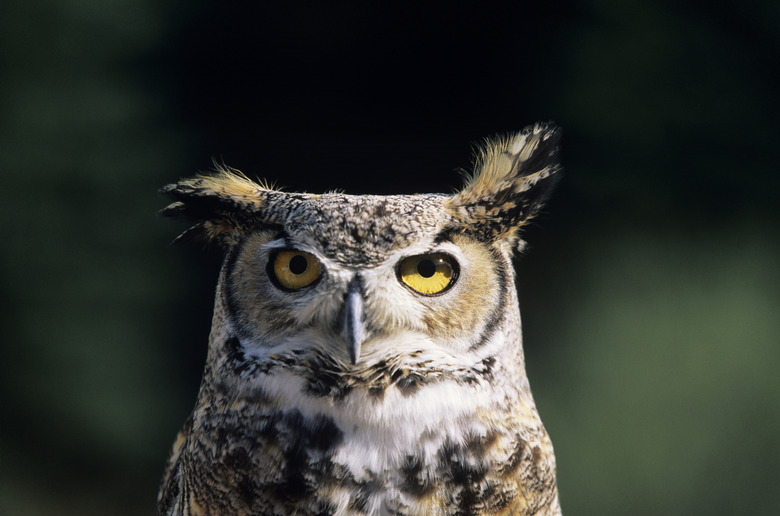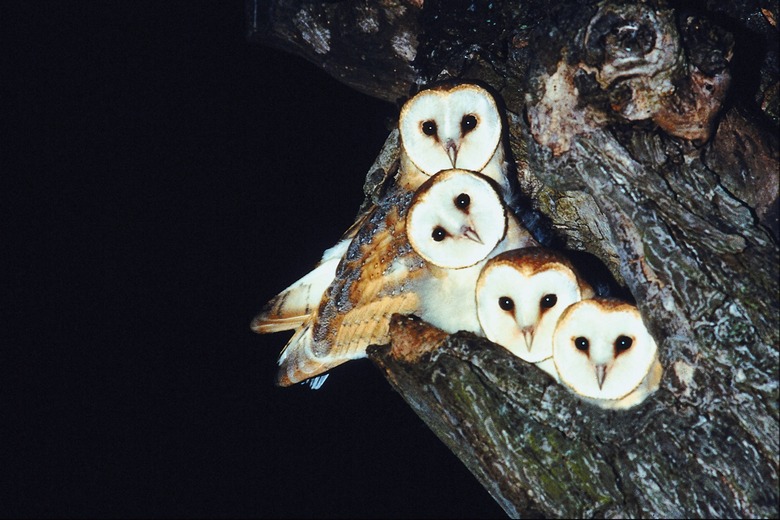What Kind Of Sound Does An Owl Make At Night?
Owls are one of the most identifiable nocturnal animals, meaning they are known for being alert at night and sleeping during the day. While not all owls are nocturnal, many are and the owl noises they make are often heard in rural, wooded areas where they nest.
These sounds include hoots, screeches, barks, growls and shrieks. The exact sound and meaning of these noises varies by owl species.
The Sound of Owls: Hoots
The Sound of Owls: Hoots
The "hoot" one of the most recognizable owl calls. Known as "The Sound of Owls", Great horned owls are especially known for their hooting sound, which involves two short, deep "hoo" sounds followed by a long "hooooooo." These owl noises are usually territorial and can be heard for several miles.
Both male and female owls hoot, but male hoots are usually deeper than females. Owls usually begin hooting at dusk and will continue until about midnight. Hooting may start again briefly before dawn.
Screeches
Screeches
Owls will sometimes shriek when threatened. Great horned owls, for example, will emit a high-pitched owl noises when attacking threatening animals. Barking owls have also been known to give loud screeches during breeding season.
These owl calls are called "screaming woman" calls for their alarming similarity to a screaming lady. Screeching usually occurs briefly after dusk and right before dawn.
Barks
Barks
Some owls use a low, barking sound when they are surprised or frightened. This sound is given in sharp, sudden intervals to scare off threats. Frightened barks may occur any time of night depending on when the owl feels threatened. Because of its use, you can hear owl barks at any time of the day or night, as long as an owl is feeling scared or threatened, it will bark.
Some owls, like the Australian barking owl, give a loud "wuf wuf" noise for which they are named. These calls are often given in a volley fashion between male and female owls and may be part of a mating or location ritual. These volleys may go on for a few minutes, but don't continue the entire night.
Growls
Growls
Threatened owls have also been known to growl to deter predators. The Great horned owl's growl sounds like a short, low-pitched honk from deep in the throat.
Barking owls also emit a dog-like snarling sound when defending their nest, but these sounds don't carry and are usually only heard at close range.
Infant Shrieks
Infant Shrieks
Infant owls are sometimes heard shrieking at night. Owlets operate on the same nocturnal schedule as their parents. When owls wake at night, the parent will often go off to hunt, leaving the infant owls in the nest.
Therefore the shrieking of infant owls can signal hunger or an attempt desire to call back their parent. Many different owl species making shrieking sounds as infants include the common barn owl, the common scops owl and the common sooty owl.
The Sound of Owls?
The Sound of Owls?
Many other types of birds and animals make sounds and calls just like owls, but are actually entirely different species. One of the most common owl calls, the hoot, is also made by the common mourning dove.
Mourning doves make a, "Whoooo whooooo" sound that can easily be mistaken for an owl.
Other young birds will also make shrieking/screeching sounds like baby owlets do, so it's hard to distinguish which are actually owlets and which are other types of birds. The best way to distinguish these sounds is to study the specific noises of each species that you're trying to identify. You can also attempt to identify the bird by process of elimination based on time of day, geographical location, and more.
Cite This Article
MLA
Watkins, Rachel. "What Kind Of Sound Does An Owl Make At Night?" sciencing.com, https://www.sciencing.com/what-kind-of-sound-does-an-owl-make-at-night-12749212/. 31 May 2019.
APA
Watkins, Rachel. (2019, May 31). What Kind Of Sound Does An Owl Make At Night?. sciencing.com. Retrieved from https://www.sciencing.com/what-kind-of-sound-does-an-owl-make-at-night-12749212/
Chicago
Watkins, Rachel. What Kind Of Sound Does An Owl Make At Night? last modified March 24, 2022. https://www.sciencing.com/what-kind-of-sound-does-an-owl-make-at-night-12749212/





